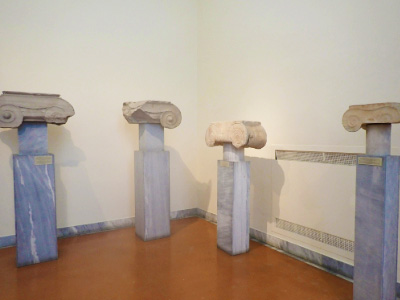National Archaeological Museum: Preserving the Past

How to Get to the Museum
The National Archaeological Museum is located at 44 Patission Street, Athens. Here are the ways to reach the museum:
- By Metro: The closest metro station is “Omonia,” which is accessible via Metro Lines 1 (Green Line) and 2 (Red Line). From Omonia, the museum is a short walk along Patission Street.
- By Bus: Several buses stop near the museum, including lines 035, 046, 060, and more. The specific bus lines may change, so it’s good to check the latest routes before your visit.
- By Car: If you are driving, there is parking available in the area, though it can be limited. It’s advisable to use public transport due to traffic and parking constraints in central Athens.
**Notes
As I headed to the bus stop early in the morning to catch a bus to the museum, I quickly became confused by the bus numbers. Deciding not to let this problem delay my day, I opted for a taxi instead. The ride was swift, taking only about 5 minutes, and soon I found myself across from the museum’s grand entrance, just on the other side of the bustling main road.
At the ticket counter, I learned that large bags weren’t allowed inside. I checked my backpack and kept only a few small essentials with me. The museum was particularly crowded that day; it seemed many others had the same idea to visit this impressive cultural treasure.
Inside, the space of the museum overwhelmed me. Each hall was packed with artifacts, and I was so engrossed in the exhibits that I hardly noticed the flow of the crowd. Before I knew it, I found myself following a group that was just leaving, and I ended up at the exit, but I quickly went in without being noticed by the guards.
Despite this mix-up, the visit was unforgettable. The vast collections, from towering statues to delicate ancient jewelry, left me completely mesmerized. The experience was a vivid reminder of the rich history housed within the walls of the museum. I hope to return, perhaps on a quieter day, to fully appreciate all its wonders.
Discover the World Without Leaving the City

Spring Fresco – This famous wall painting, also known as the “Flotilla Fresco,” originates from Akrotiri, a Minoan Bronze Age settlement on the island of Santorini (ancient Thera) that was preserved in volcanic ash.
Inside the National Archaeological Museum, visitors can explore a vast array of artifacts spanning several millennia, from prehistoric times to late antiquity. The collections are organized into five main sections:
- Prehistoric Collection: This section displays items from the Neolithic period, the Cycladic civilization, and the Mycenaean civilization, including famous pieces like the gold masks from Mycenae.
- Sculpture Collection: It features a comprehensive range of Greek sculpture, showcasing developments in style and form from the 7th century BCE to the 5th century CE. Highlights include the statues of Zeus or Poseidon and the Artemision Bronze.
- Vase and Minor Objects Collection: This collection exhibits a wide variety of ancient Greek pottery, representing all significant periods and styles, along with small everyday objects, jewelry, and tools that give insight into the daily life of the ancient Greeks.
- Metallurgy Collection: It includes metal objects like weapons, tools, and the famous Antikythera Mechanism, which is an ancient analog computer.
- Egyptian Art Collection: A smaller but significant collection of Egyptian antiquities, reflecting the interactions between Greek and Egyptian cultures over the centuries.

Bronze Statue of Zeus or Poseidon
This magnificent bronze statue, dating from around 460-450 BCE, is one of the most iconic images of ancient Greek art. It stands over 2 meters tall, depicting either Zeus or Poseidon, which remains a topic of debate among scholars due to the missing attribute—either a thunderbolt for Zeus or a trident for Poseidon. The figure is captured in a dynamic pose, with the arm thrown forward in the act of throwing, and the other arm extended back, demonstrating remarkable balance and movement. The work showcases the skill of Greek sculptors in creating detailed, lifelike statues that convey power and motion.
History, Art, and Innovation Under One Roof

A Window into Worlds Long Gone

The Kore and Kouros statues are significant artifacts from ancient Greece, prominently featured in many museums, including the National Archaeological Museum in Athens. These statues represent a fascinating period in Greek sculpture known as the Archaic period, which lasted from around 650 to 480 BCE. Kouros (plural: Kouroi) are statues of male youths which stand upright and are usually depicted nude. They are characterized by a rigid frontal stance with the left foot slightly forward, arms by their sides or sometimes one arm extended, and clenched fists. These statues often served as grave markers or as dedications in sanctuaries.
Kore (plural: Korai) are the female counterparts to the Kouroi and are depicted as clothed young women. Unlike the Kouros, the Kore statues are more elaborate in terms of attire and detail, often shown wearing intricate, layered garments, with detailed hairstyles and accessories. The Kore statues were also primarily used as votive offerings in religious contexts.
Your Portal to Art, Science, and History






